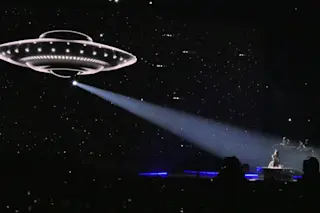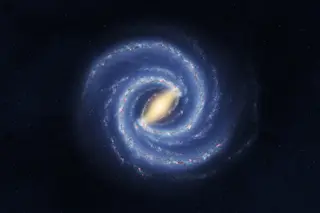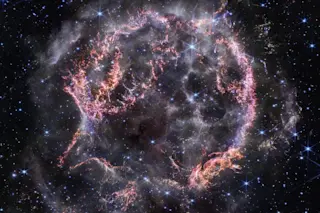Albert Einstein’s theories have led to all kinds of fantastic insights, including the prediction that an accelerating mass creates ripples in the structure of space, disturbances known as gravitational waves. Various studies have yielded tantalizing confirmations that these ripples really exist, but now Andrew Lyne, director of the Jodrell Bank Observatory in the United Kingdom, is using an exotic type of double star to study gravitational waves with great precision.
Lyne’s object consists of two pulsars, extremely dense stellar cinders that emit beams of radiation as they spin. As the stars swoop around each other once every two and half hours, theory predicts, they emit a torrent of gravitational waves that suck out energy and subtly cause the pulsars to speed up. Measuring the orbital period should be easy because during each circuit the larger pulsar—more massive than the sun yet just 12 miles in diameter—detectably distorts radiation from the ...















